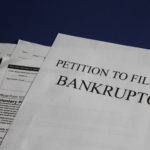If you’re reading this, then you’re definitely want to settle your debt and intent on making debt settlement part of your 2018 plan. Anyone with outstanding debt should be thinking the same thing! There are many benefits to paying off debt, like its ability to increase your credit score. However, rebuilding your credit isn’t an overnight occurrence, it involves changing habits and behaviors in your life that got you into this mess in the first place. Debt settlement is the pot of gold at the end of that rainbow, and we’re going to show you how to get there.
How to Settle Your Debt
Here are a few proven strategies for settling debt in 2018:
1. Timely Payments
Yes, this may seem obvious. However, it’s not as obvious as you may think. The more payments you avoid, the higher your repayment fees and interest rates will be as they carry over into the next month. This snowball effect is what lands you in a pool of debt that can seem insurmountable. Not to mention, these late payments affect your credit score, making it harder for you to obtain loans and other purchases without impossible interest rates.
2. Close Delinquent Accounts
If you have accounts that you have never used, or accounts with unmanageable interest rates attached, close them. You don’t have to keep them open, despite what the lender might tell you. Transfer the amounts into other accounts, and cut up the credit cards when you’re all done. You have more control over your debt settlement than you might think.
3. High-Interest First
The higher the interest, the more debt it is mounting under your name. Therefore, it deserves priority. If you want to improve your debt and credit score simultaneously, tackle these high interest debts first. Rank your debts according to priority, paying off the highest ones first. When that happens, money is freed and added to the second priority debt. As it continues, you will obtain more and more control over your payments, feeling more confident in your ability to settle your debt.
4. Lowest Credit Limits
After you tackle the highest interest rate accounts, now it’s time to look at the lowest credit limit accounts. If you have a low debt level compared to your limit, you can get approval on a big loan. But, if you max out the card, that is a bad sign to lenders. Make sure you pay off the balance on those with the lowest limit so you can raise your credit score and receive more favorable interest rates.
5. Credit Utilization Scores
There’s a ratio used to configure your credit score. You want to keep this ratio lower than 30%. If it’s kept under this percentage, it will not harm your score moving forward. If your ratio is above 30% right now, you are racking up debt as we speak. Let’s say your limit is $10,000, your balance should therefore never be greater than $3,000.
Settle Your Debt in 2018
Forget exercising and eating healthy: make debt settlement your top New Years Resolution for 2018.






